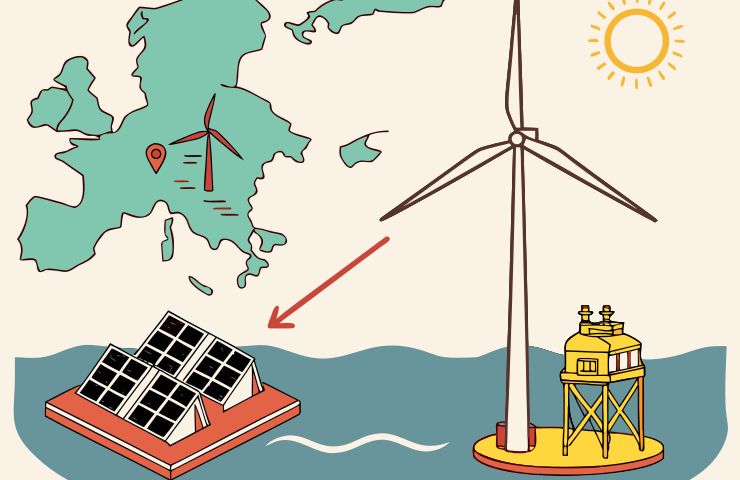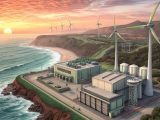
Hydrogen Production Goes Offshore: Ocean-H2’s MVDC Microgrids in Mediterranean, North Sea and Baltic
October 30, 2025When you think about scaling green hydrogen, solar farms and onshore wind turbines usually steal the spotlight. But Europe’s offshore waters might just be the secret sauce. Under the umbrella of the Sustainable Blue Economy Partnership, Ocean-H2 is charting a bold course to turn sea-borne wind and sunshine into massive volumes of hydrogen. Officially launched on 1 September 2025, this five-nation effort—spanning Malta, Italy, Sweden, Germany and France—aims to blend technical wizardry, economic savvy and social know-how across three major marine arenas: the Mediterranean Sea, the North Sea and the Baltic Sea.
At its heart, Ocean-H2 is on a mission to find the sweet spot for large-scale offshore hydrogen production powered exclusively by renewables. The University of Malta’s Department of Electrical Engineering is steering the ship on the engineering front, while the University of Naples Federico II tackles community engagement and social dynamics. Cutting-edge hardware assessments come from RISE (Research Institutes of Sweden), Fraunhofer ISIT in Germany and UTBM (Université de Technologie de Belfort-Montbéliard) in France. Over three years, they’ll pilot medium-voltage direct current networks, plug in water electrolysis units alongside floating wind and solar arrays, test deep-sea storage ideas, and figure out how to hook it all into Europe’s power grids—while keeping tabs on costs and building public trust for a robust hydrogen infrastructure.
Technical Blueprint for Offshore Hydrogen
The linchpin of Ocean-H2 is its medium-voltage direct current (MVDC microgrids), which stitch together scattered offshore renewables into one smooth power stream. Running at ±20–50 kV, MVDC lines can slash resistive losses by up to 30% over distances north of 50 km, according to simulations from the University of Malta. The team will model different layouts—think radial spines, looped rings and mesh networks—to measure fault resilience, voltage steadiness and safety measures in a salty, ever-moving environment. By comparing real-life cable performance and breakdown patterns, they plan to cook up a modular microgrid blueprint that can grow from 100 MW pilot plants into gigawatt-scale hubs.
On the conversion side, partners are putting both alkaline and proton exchange membrane (PEM electrolyzers) through their paces to handle the ebb and flow of offshore power. These 1–5 MW champions sit on buoyant platforms built to brave 5 m waves and 30 m/s gusts. The researchers will track efficiency rates—usually between 60% and 75% on a lower heating value basis—plus how quickly units ramp up or throttle down. Hybrid trials will see wind turbines and bifacial solar panels sharing deck space, all wired to electrolyzers via wet-mate connectors and undersea MVDC cables overseen by digital control systems courtesy of Fraunhofer ISIT.
Once the molecules are made, the focus shifts to storage and delivery. The consortium is weighing floating pressurized tanks against gravity-fed seabed caverns, both pushing hydrogen up to 200–300 bar. Those reservoirs could link to onshore filling stations or industrial hubs by pipeline or high-pressure shipping. Meanwhile, UTBM and RISE are crunching techno-economic models to see whether it makes more sense to pipe hydrogen ashore or turn it back into electricity when the grid needs a boost. This two-pronged approach could smooth out renewable supply dips while keeping capital and operating costs in check by tapping existing energy corridors.
Business and Policy Levers
The European Union isn’t just watching from the sidelines—it’s clear on the goal: decarbonize industry and maritime transport with at least 10 million tonnes of domestic green hydrogen by 2030. Ocean-H2 tackles the big hurdles that land projects face—land scarcity, congested grids and local opposition—by going offshore. Under Brussels’s “Fit for 55” drive, offshore green hydrogen gets fast-track permits and funding perks, with up to €3 billion set aside for R&D via Horizon Europe and the Innovation Fund. Early estimates from RISE put the levelized cost of hydrogen (LCOH) for offshore setups at around €3–5 per kilogram—quickly catching up with onshore figures as electrolyzer and cable prices drop.
The University of Malta earned the coordinator badge thanks to its chops in off-grid power systems, while University of Naples Federico II leads the charge on social impact and stakeholder outreach. RISE, Fraunhofer ISIT and UTBM bring hands-on tech validation and system integration know-how. Financing blends EU grants, national energy agency backing and in-kind support, striking a balance between public and private risk. And by looping in potential customers early—everything from shipping fleets to desalination plants—they’re making sure there’s real market pull to carry pilots into full-blown commercial roll-out.
Socio-Environmental and Future Prospects
Floating platforms can ruffle feathers among fishers, conservationists and coastal communities wary of ecosystem impacts or navigation hassles. To head off trouble, University of Naples Federico II is running participatory workshops using GIS-mapped zones and scenario planning. This lets locals weigh in on trade-offs and perks—think port fees, new jobs or cheaper local power—building the social license that’s vital for fast deployment.
Artificial offshore structures inevitably tweak marine habitats. That’s why Ocean-H2 is doing baseline and in-situ studies around pilot sites, tracking everything from seabed biodiversity to underwater noise. They’ll compare notes with projects like Germany’s H2Mare and Spain’s Bahía H2, which show minimal long-term harm if sites are chosen and managed smartly. By weaving data across three seas, the team hopes to publish a best-practice guide for low-impact offshore hydrogen facilities.
By mixing hands-on technical trials, solid economic projections and early community buy-in, Ocean-H2 is crafting a full-spectrum blueprint for offshore hydrogen production. As the clock ticks toward 2028 deliverables, this initiative could spark new policies, attract fresh investment and open the door for Europe—and beyond—to ride its blue frontier into a truly zero-emission future.


 With over 15 years of reporting hydrogen news, we are your premier source for the latest updates and insights in hydrogen and renewable energy.
With over 15 years of reporting hydrogen news, we are your premier source for the latest updates and insights in hydrogen and renewable energy.